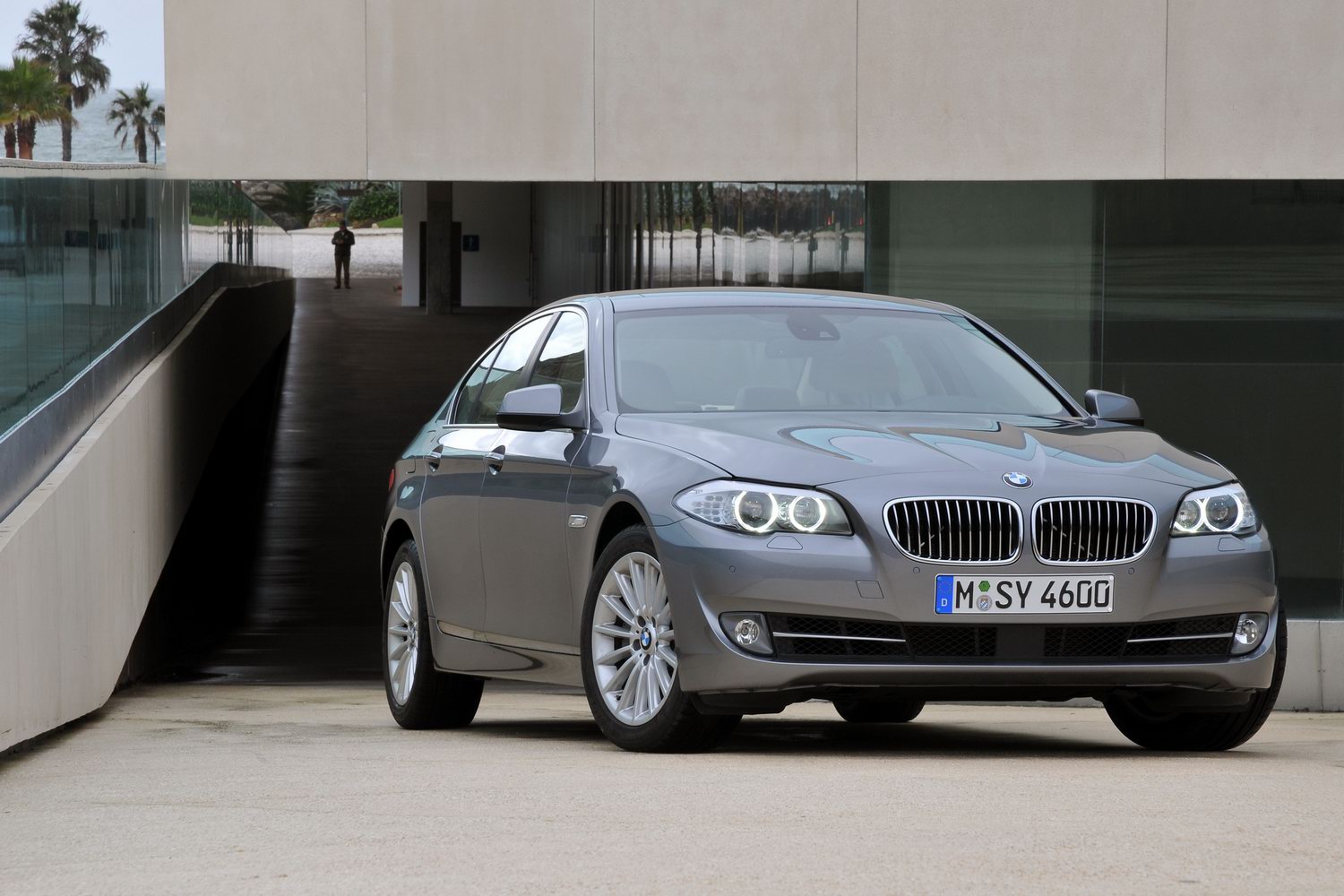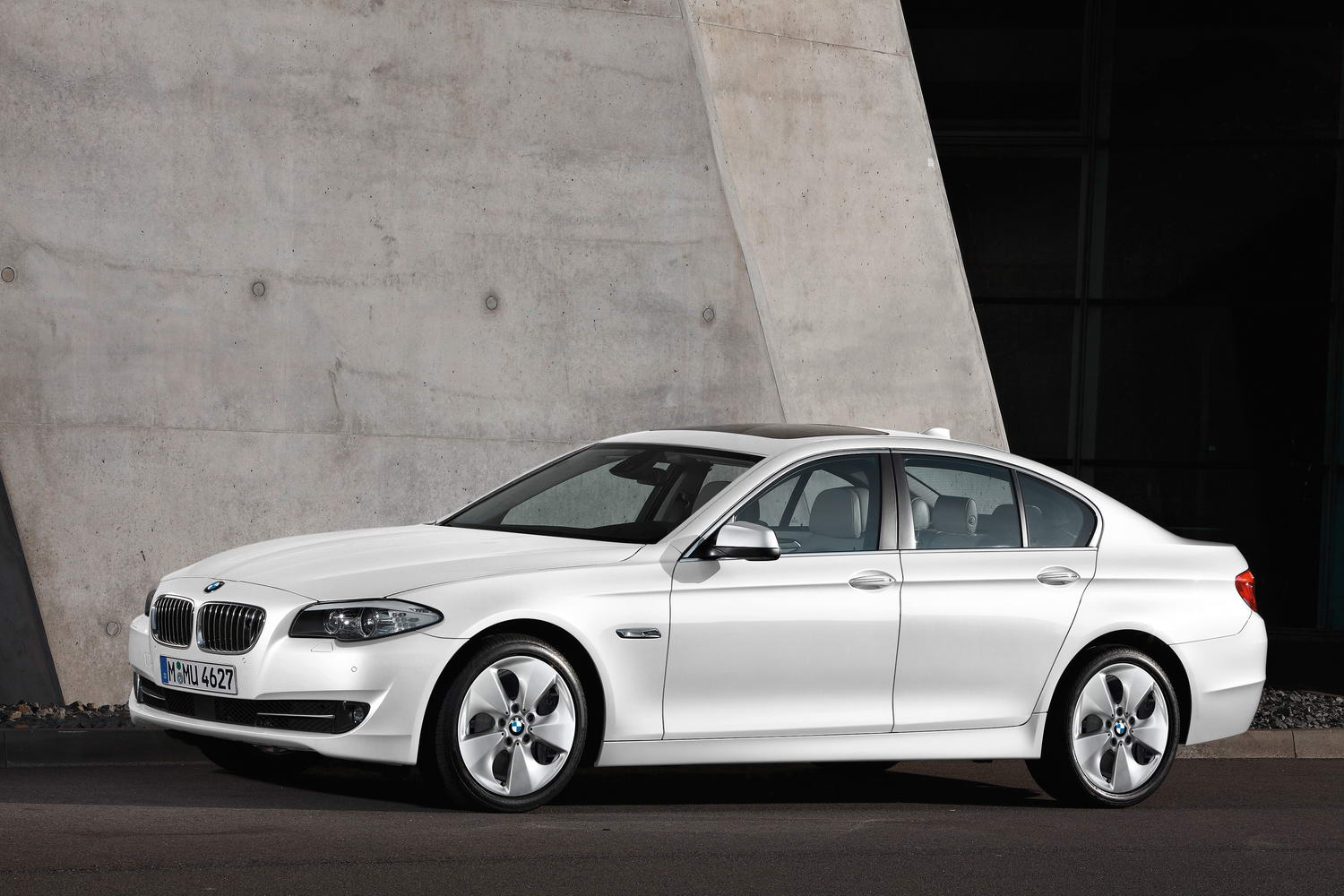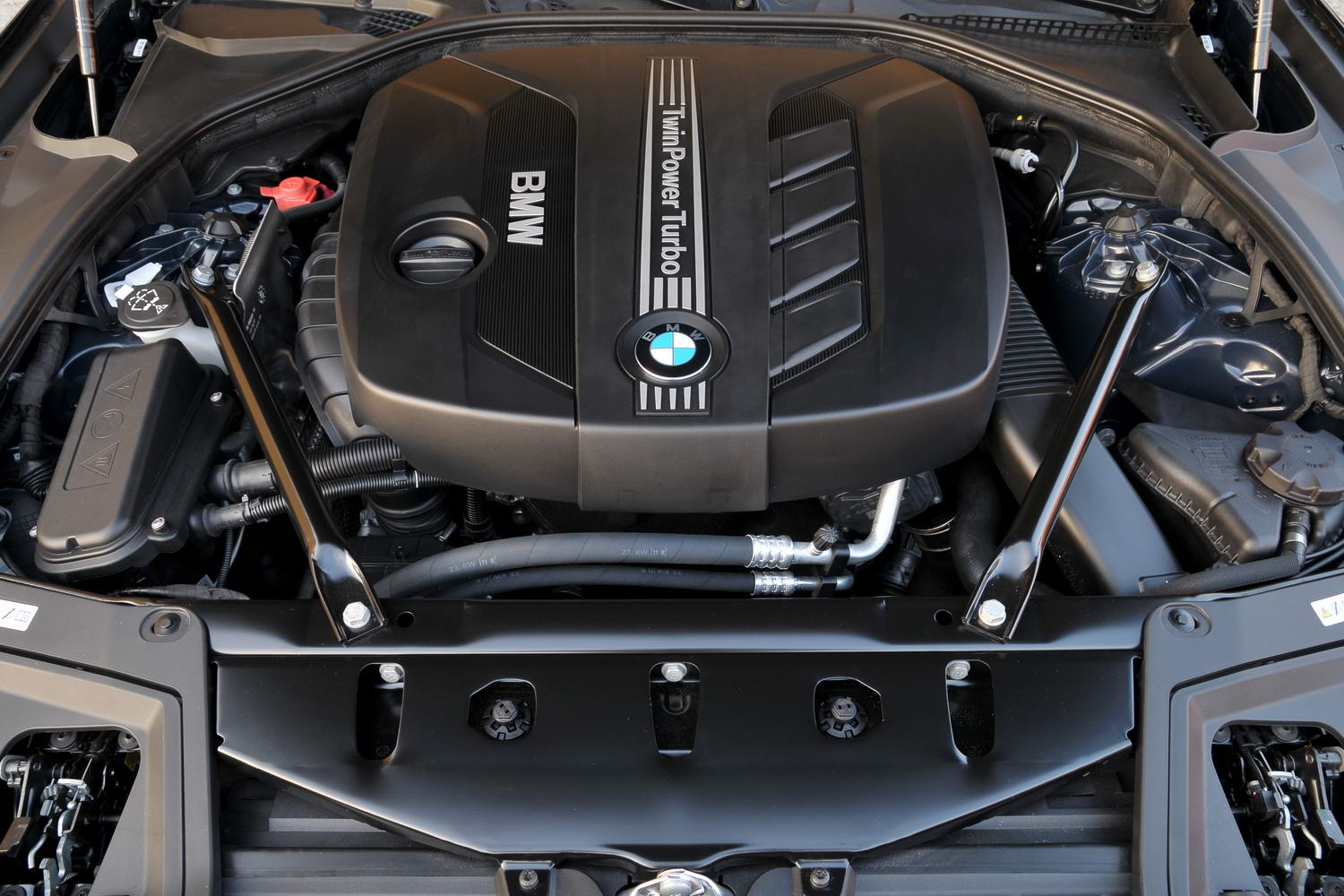Engine and range options for the F10 BMW 5 Series
The sixth-generation BMW 5 Series lived out almost the entirety of its life in the period after our road tax laws changed to a heavily CO2-emissions-biased system in 2008 - meaning an incredibly high proportion of the used examples on our market are diesels; to the point that among 500 cars or thereabouts that may be on sale at any one time, only single-digit numbers of them will be petrol-powered.
Nevertheless, we'll outline the petrol options that were available. This was the 5 Series where normally aspirated straight-six petrol engines were replaced by smaller turbocharged fours and sixes too. With a suite of 'N53' straight-six naturally aspirated petrol engines to start with, there was the 523i (204hp) and the 528i (258hp), the latter of which was soon replaced by the 530i with 272hp. A 535i twin-turbo 3.0-litre delivered 306hp, while top-dog status was reserved for the 550i and its biturbo 4.4-litre V8, delivering 408hp.
But in 2012, the wider switch to turbos started to happen. The 520i replaced the 523i and gave 184hp from a 2.0-litre turbocharged four. The 528i also returned, although now as a more potent twin-turbo 2.0-litre with 245hp. The 530i was also dropped in 2013 but as succour for fast BMW fans, the F10 M5 arrived in 2012, with its 560hp twin-turbo 4.4-litre V8. A later, optional Competition Package version saw the output increased to a remarkable 600hp.
In 2014, the life-cycle impulse (LCI - BMW's way of saying 'facelift') saw the 550i raised to 450hp with a development of its V8 engine, but the F10 remained with the 520i, 528i, 535i and 550i structure for the rest of its build. There was an ActiveHybrid 5 with a 340hp petrol-electric powertrain built from 2011-2016, but as it was heavier and more expensive than the deeply impressive diesels, it never found great favour with buyers. No plug-in hybrid F10 5 Series was ever built.
The diesels are much easier to understand. They ran 518d, 520d, 525d, 530d and then 535d. Most of these were four-cylinder units, the 525d originally launching with a 3.0-litre six-cylinder engine with 204hp, but later replaced (in 2012) by a 2.0-litre four with 218hp. All of the 520d, 530d and 535d were available from launch or very soon after, the four-cylinder 520d with 184hp, while the two bigger six-cylinder units delivered 245- and 306hp respectively. Both of these were uprated in 2012 to 258- and then 313hp, but the more notable update happened when the 520d (which had been increased to 190hp in 2012) was given a new 'B47'-type engine for 195hp. A similar switch from N47 to B47 engines happened with the 518d, a detuned 2.0-litre turbodiesel introduced in 2013 with a 143hp engine, taken to 150hp with the facelift. The 525d stuck with the N47 engine until it was phased out around 2015. The Irish market never received the triple-turbo M550d xDrive and its 381hp engine.
BMW only offered a gearbox choice of a six-speed manual or an eight-speed automatic on the mainstream models, the latter being far more common than the former. The M5 had a dual-clutch automatic 'DCT' transmission, and both this DCT and the eight-speed auto were firsts for the 5 Series lineage, as were the turbocharged V8 petrol engine and the hybrid model.
In Ireland, the trim structure followed an SE, Sport and then M Sport hierarchy. All cars will have at least 17-inch alloys, dual-zone climate control, Park Distance Control front and rear, a BMW Business navigation system, Bluetooth, DAB, leather upholstery, Xenon lights, part-electrically-adjusted front seats and auto lights and wipers as standard. Sport cars added a different style of alloy wheel and some sundry dark-chrome trim details, but the M Sport specification was much more popular - this brought in 18-inch alloy wheels, full exterior body styling, LED front fogs, an M Sport multifunction steering wheel and sports seats in the front.
You may also find Modern and Luxury examples on the used market, which will be post-facelift UK imports (where BMW UK dropped the Sport trim in favour of Modern and Luxury, which sat between SE and M Sport). The Modern is roughly analogous to the departed Sport, albeit with 18-inch wheels, while the Luxury loaded up glitzy chrome and additional connectivity/Voice Control functions to emphasise the plush nature of the 5 Series. Again, it sat on 18-inch alloys, but neither the Modern's nor the Sport's wheels looked like the M Sport's 18-inch rims.
How much is it to tax the F10 BMW 5 Series?
Refer to our Motor Road Tax Prices in Ireland Explained feature for the up-to-date cost to tax the BMW 5 Series.
































